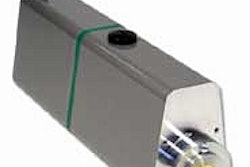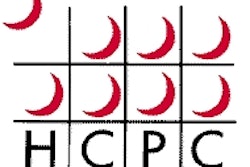To find out what issues most concerned pharmaceutical packagers, Packaging World conducted an exclusive mid-April survey on its Packworld.com Web site among a sampling of pharmaceutical readers. Those issues were reported in June (see packworld.com/go/c076).
In this article, survey respondents elaborate on the pros and cons of repackaging, whether their company pays more for equipment that’s easy to validate, and changes in packaging policies related to the Food and Drug Administration’s Title 21 Code of Federal Regulations Part 11, concerning electronic records and electronic signatures. (For more information on 21 CFR Part 11, visit www.fda.gov/ora/compliance_ref/part11.)
Although many respondents indicated their firms would meet FDA requirements, several others noted that the FDA draft guidance would necessitate changes. “It is affecting our procedures greatly. We are implementing lots of procedural changes that result in [the need for] training,” said an engineer with a large northeastern manufacturer and marketer of medical products and pharmaceuticals.
“We have training classes outlined for the time when that does happen, which I’m sure will be in the not-too-distant future,” added a research and development representative with a mid-sized company in the Midwest that provides services to the pharmaceutical, biotechnology, and healthcare industries.
Another R&D respondent, this time in the Northeast, noted “the company view is that complete instrument control and data storage systems may have to be replaced if they can’t be upgraded to be compliant. Also, instrument audit trails will become more strict. Specific productivity on a particular piece of equipment is likely to be somewhat reduced by the enhanced security activities and archiving requirements.” It should be noted that this respondent admitted that he “was not close to packaging in particular.”
Another large company in the Midwest had “new computer systems being phased in and validated to comply with the guidance,” according to a company R&D professional. “Electronic signatures are still not implemented.”
Although no changes were being implemented this year at another large midwestern pharmaceutical company, a quality assurance officer for the firm noted that “corporate is seriously investigating an electronic batch record system to reduce documentation errors and to improve system controls.”
Other survey respondents indicated that their firms were either in compliance with the requirements or that no changes were necessary. Not surprisingly, some professionals voiced uncertainty about the proposed FDA guidelines. A quality assurance person with a smaller firm in the Southeast explained: “We are trying to move toward 21 CFR Part 11 compliance, but ... we are unsure as to what needs to be done. We still use hard copy for most of our Good Manufacturing Practices records.”
Repackaging: yea or nay?
Another survey question asked, “Does your company view repackaging positively or negatively?” Overall, responses leaned to the latter. “We try to avoid repackaging, or off-site packaging of our products by a third party, because of product cost issues and loss of control once product leaves our facilities,” noted a production professional with a large midwestern pharmaceutical company.
“It’s a necessary evil, with the lack of control over the product at a repackager causing [us] concern,” added an engineer with a large pharmaceutical maker in the East. Along the same lines came this response from the plant manager of a large southeastern firm: “We view it negatively. There is no way to assure quality, proper labeling, [or to] avoid mix-ups.”
“It’s just another step in the delivery process where product contamination or mislabeling could occur,” said an engineer with a smaller pharmaceutical firm in the Midwest.
There were many respondents who supported repackaging. “It provides a needed service,” was the succinct response of a quality assurance person with a smaller pharmaceutical maker in the Northeast.
“We view repackaging as a positive. It reduces cost of inventory,” said a production respondent with a microbiological laboratory supply company in the Northwest.
A purchasing agent with a smaller northeastern maker of nutritional products offered this interesting response: “No harm, no foul ... business is business and if a market exists to support it, then so be it!”
Others viewed repackaging positively, but with caveats. “I like the business but am concerned about the efficacy of the product going to the patient in packages other than our own,” expressed an engineer with a large pharmaceutical company in the mid-Atlantic states. “I would think that repackagers can be viewed positively provided they do their homework [regarding] inspection, qualification, periodic audits, and historical reports.”
Equipment validation
The Packworld.com survey also asked about paying a premium for equipment that’s easy to validate. “Sometimes,” said a plant manager with a large company in the Southeast, “it depends on the degree of difficulty involved. Validating packaging equipment is usually not extremely difficult.”
Many respondents preferred that equipment vendors provide machines that are easy to validate. The production representative of a large pharmaceutical company in the Midwest said, “We look for equipment that is easily validated because of the cost and time involved.”
Although the purchasing representative of a smaller midwestern firm didn’t provide a clear yes or no regarding the question, he noted that “commissioning of equipment as per specifications and manufacturer’s documents are critical to the success of validation efforts.”
Validation of equipment posed challenges, according to several respondents. “Validation takes time. Easy-to-operate equipment is better ... however, that generally means much more qualification time,” said an R&D respondent from a mid-sized firm in the Midwest.
“Validation issues remain confusing,” admitted an R&D representative with a northeastern pharmaceutical maker. “Our internal compliance people indicate we should do certain things. Vendors provide qualification packages for their equipment. Reconciliation of the two remains a problem, and understanding what the FDA really wants is also difficult.”

























